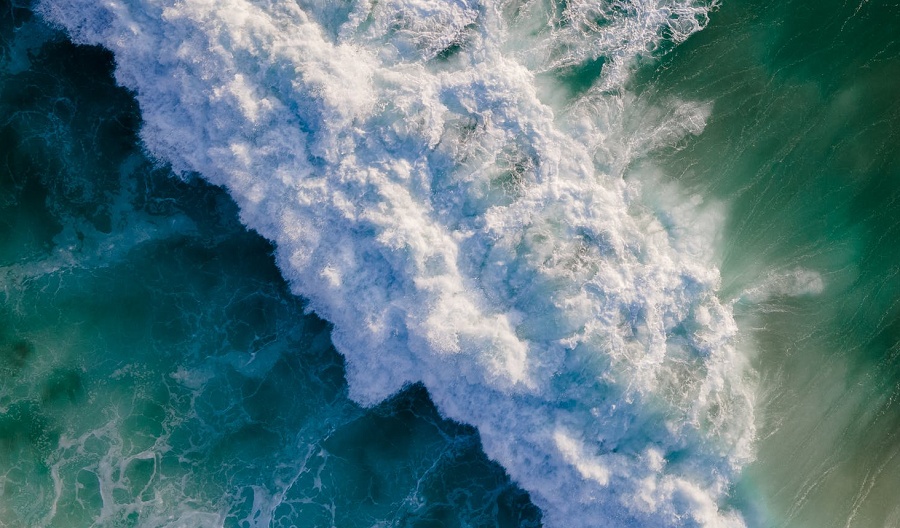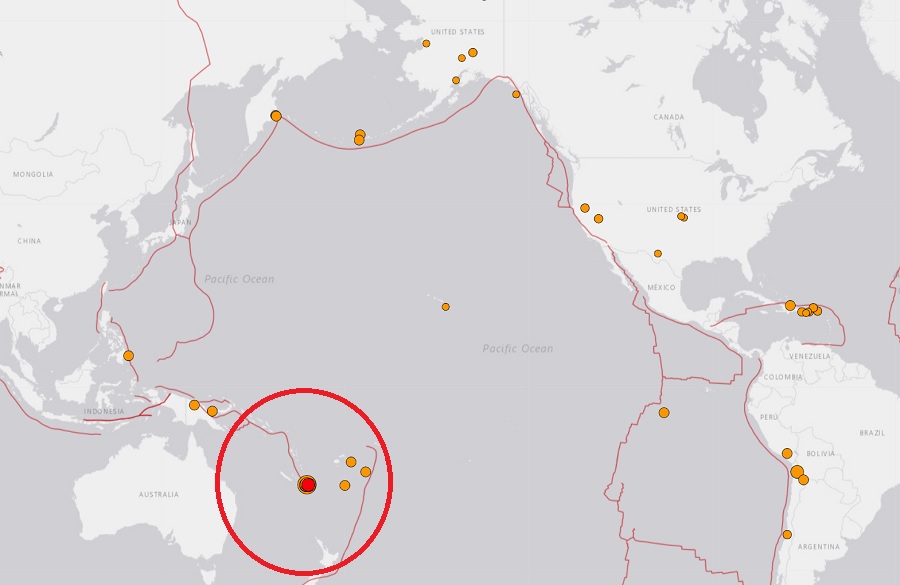
According to the USGS, a powerful 7.7 magnitude earthquake struck just southeast of the Loyalty Islands in the southwest Pacific, generating a tsunami and triggering multiple tsunami alerts from across the Pacific, including from the Honolulu, Hawaii-based National Weather Service Pacific Tsunami Warning Center (PTWC). The earthquake struck at 4:57 pm Hawaii Time / 7:57 pm Pacific Time / 10:57 pm Eastern Time on Thursday, May 18 from a depth of 37.7 km; since then, there have been 14 strong aftershocks, including 13 that were a magnitude 5.1 event or greater.
While tsunami was observed in portions of the south Pacific, there was no tsunami threat to Hawaii, Alaska, or the west coast of North America including California, Oregon, and Washington. In a bulletin issued by the PTWC, they advised people in Hawaii, “based on all available data, a destructive Pacific-wide tsunami is not expected and there is no tsunami threat to Hawaii.” The National Weather Service National Tsunami Warning Center (NTWC) in Palmer, Alaska issued a similar bulletin to the North American west coast, saying “there is no tsunami danger for the U.S. West Coast, British Columbia, or Alaska. Based on earthquake information and historic tsunami records, the earthquake is not expected to generate a tsunami.”

However, while the powerful earthquake and numerous aftershocks didn’t create a Pacific-wide tsunami, it did create a regional tsunami that impacted portions of the southwest Pacific Ocean including New Zealand, Vanuatu, and New Caledonia, where tsunami advisories or warnings were issued by local authorities. According to the PTWC, a 2 foot tsunami with a wave period of 4 minutes hit Lenakel, Vanuatu, which was the greatest tsunami measured from this seismic event.
All in, 11 bulletins were issued by the National Weather Service tsunami centers, with more tsunami advisories issued by other local authorities in Australia, New Zealand, and locations around the South Pacific.
Fortunately, the PTWC has issued a final tsunami threat message: “Based on all available data, the tsunami threat from this earthquake has now passed.”
Tsunamis are giant waves caused by earthquakes or volcanic eruptions under the sea. Out in the depths of the ocean, tsunami waves do not dramatically increase in height. But as the waves travel inland, they build up to higher and higher heights as the depth of the ocean decreases. According to the National Ocean Service, the speed of tsunami waves depends on ocean depth rather than the distance from the source of the wave. Tsunami waves may travel as fast as jet planes over deep waters, only slowing down when reaching shallow waters. While tsunamis are often referred to as tidal waves, this name is discouraged by oceanographers because tides have little to do with these giant waves.